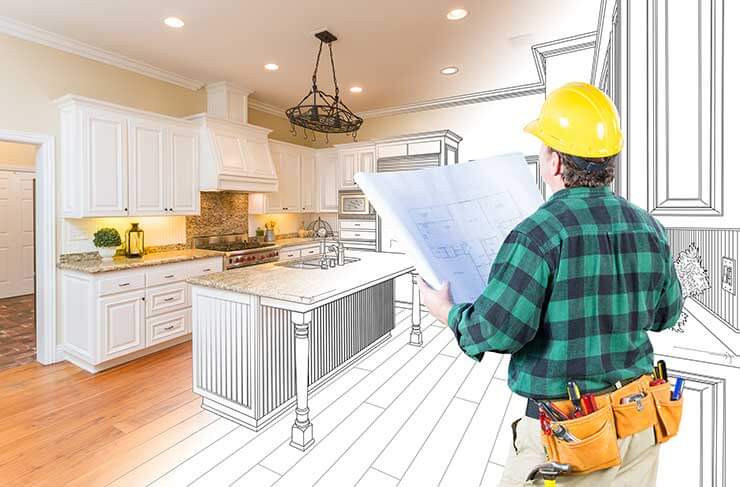Tile access panels are unique door types that grant and conceal an entry point while keeping a seamless blending and elegant appearance within their surroundings. That’s why it’s one of the most sought-after access doors in the industry, addressing accessibility, functionality, security, and aesthetic concerns.
In this blog post, we’ll deeply tackle the features and functions of tile access panels. We’ll also share some types of tile doors that you can consider installing in your area. More importantly, you can discover effective cutting and installation techniques when applying the tile panels in your wall and ceiling spaces.
What are the features and functions of Tile Access Panels?
Tile access panels are essential to construction projects, providing easy access to concealed utility systems behind tiled surfaces. It usually comes in different sizes, shapes, and designs and can be made from various materials, including plastic, metal, and wood. Tile-built panels can blend seamlessly with the surrounding tiles, granting a discreet and aesthetically pleasing solution to accessing concealed systems.
The key features of tile access doors are their ease of use, durability, and compatibility with different tiles. They are designed to be user-friendly and can be easily opened or removed to access plumbing, electrical, and HVAC systems. Tile doors are also made to last, with robust materials that can withstand frequent use and exposure to harsh environments.
The functions of tile access panels are manifold. It allows easy access to concealed systems, enabling quick maintenance and repair of plumbing, electrical, and HVAC systems. It can reduce the need for costly and time-consuming tile removal, which can cause significant disruption to the building occupants. Tile access panels also give a secure and safe solution to accessing facility fixtures, preventing unauthorized access or accidental damage to the systems.
Below are the tile access door types you’ll usually encounter in the market. Jot down each characteristic and wisely purchase the most-fitting panel for your walls and ceilings.
- Removable Tile Access Panels: The removable tile access panels allow effortless removal from the tile surface to provide an entry point to the facility systems. They are often made of plastic or metal and are available in different sizes and shapes to fit other tile surfaces.
- Hinged Tile Access Panels: These panels are similar to removable panels but are attached to the tile surface with hinges. It permits the panel to be opened like a traditional door to give access to the establishment’s facilities.
- Push-Lock Tile Access Panels: Experts tightly attach this panel type to the tile surface with a push-lock mechanism. To access the structure’s utilities, you simply push the panel in and turn it to unlock it.
- Magnetic Tile Access Panels: The magnetic tile access panels are held in place by magnets. They are easy to install and remove, enabling quick access to the building facilities.
- Sliding Tile Access Panels: These panels slide on a track, and authorized personnel can easily move it to grant access to the utility systems behind the tiles.
After identifying the right tile access panel for your space, you must now take note of the efficient cutting and installation techniques that will be handy to achieve a professional-looking finish.
Effective Cutting Techniques
Cutting tile access panels requires precision and accuracy to ensure a proper fit. Here are some helpful cutting techniques you can use:
- Measuring: The first step in cutting tile access panels is to measure the size and shape of the opening required. Take accurate opening measurements to ensure that the access panel fits snugly.
- Marking: Once you have measured the opening, mark the cutting lines on the tile surface using a pencil or marker. Use a straight edge to guarantee that the lines are perfect and precise.
- Cutting: There are several tools you can use to cut tile access panels, including tile cutters, angle grinders, and rotary devices. A tile cutter is the most commonly used tool for cutting access panels.
Useful Installation Techniques
Installing tile access panels requires careful planning and attention to detail to ensure a proper fit and a professional-looking finish. Here are some effective installation techniques you can use:
- Preparing the Surface: Before installing the access panel, ensure the tile surface is clean and free from debris or dust. Use a vacuum cleaner or damp cloth to remove any dirt or debris.
- Applying Adhesive: Apply a suitable adhesive to the back of the access panel, then carefully position it over the opening. Use a spirit level to ensure the panel is level and flush with the surrounding tiles.
- Finishing: Once the access panel is in place, use a tile grout to fill gaps between the access panel and the surrounding tiles. Use a sponge or damp cloth to remove any excess grout, then allow the grout to dry.
Tile Access Panels: All-rounder property component
Efficient tile access panel cutting and installation techniques require careful planning and attention to detail. With the correct tools and methods, you can achieve a seamless and elegant finish that provides easy access to concealed establishment utilities behind tiled facades. Remember to take accurate measurements, use suitable cutting tools, and apply adhesive carefully to ensure a proper fit.




